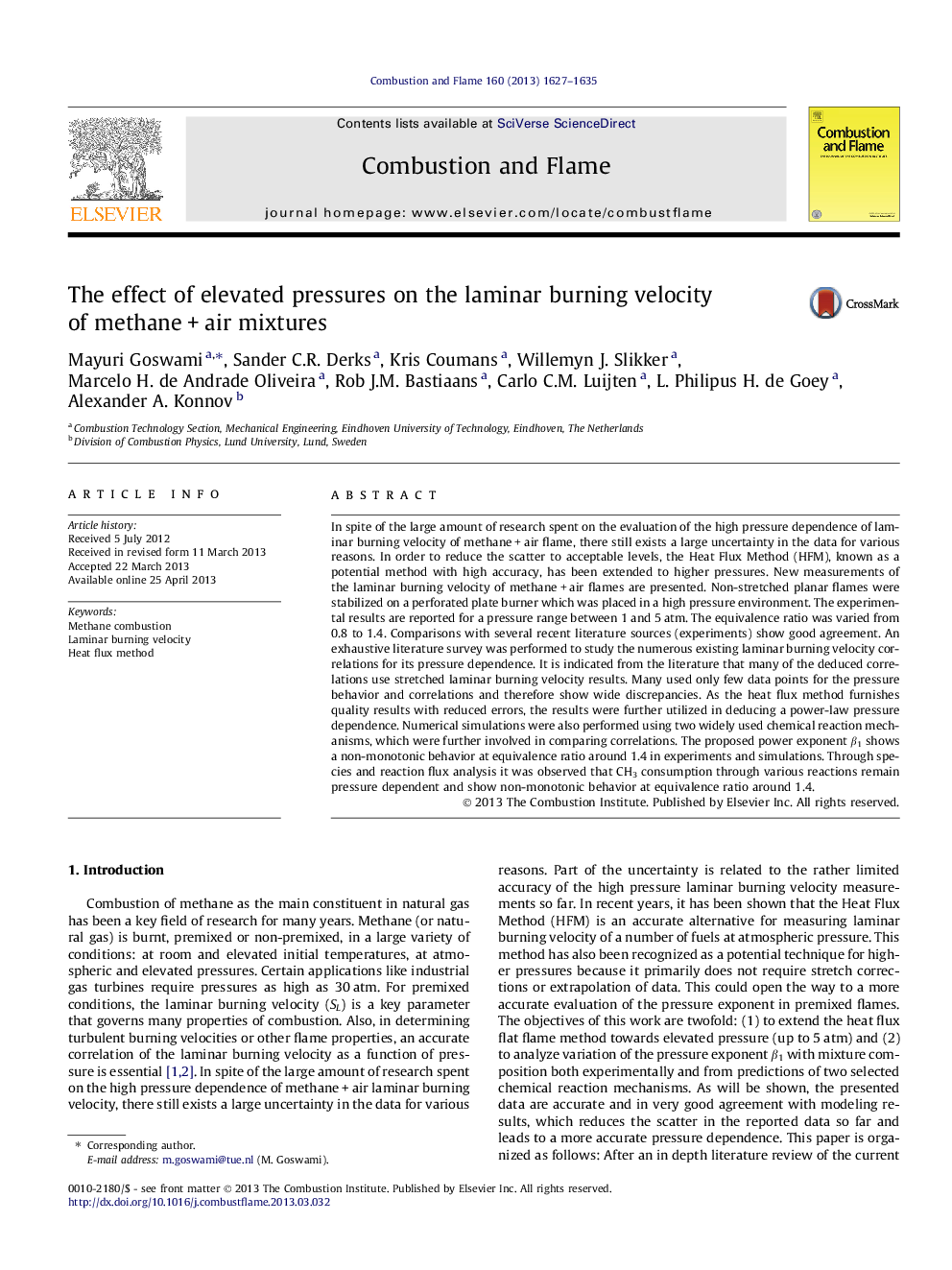| Article ID | Journal | Published Year | Pages | File Type |
|---|---|---|---|---|
| 166937 | Combustion and Flame | 2013 | 9 Pages |
In spite of the large amount of research spent on the evaluation of the high pressure dependence of laminar burning velocity of methane + air flame, there still exists a large uncertainty in the data for various reasons. In order to reduce the scatter to acceptable levels, the Heat Flux Method (HFM), known as a potential method with high accuracy, has been extended to higher pressures. New measurements of the laminar burning velocity of methane + air flames are presented. Non-stretched planar flames were stabilized on a perforated plate burner which was placed in a high pressure environment. The experimental results are reported for a pressure range between 1 and 5 atm. The equivalence ratio was varied from 0.8 to 1.4. Comparisons with several recent literature sources (experiments) show good agreement. An exhaustive literature survey was performed to study the numerous existing laminar burning velocity correlations for its pressure dependence. It is indicated from the literature that many of the deduced correlations use stretched laminar burning velocity results. Many used only few data points for the pressure behavior and correlations and therefore show wide discrepancies. As the heat flux method furnishes quality results with reduced errors, the results were further utilized in deducing a power-law pressure dependence. Numerical simulations were also performed using two widely used chemical reaction mechanisms, which were further involved in comparing correlations. The proposed power exponent β1 shows a non-monotonic behavior at equivalence ratio around 1.4 in experiments and simulations. Through species and reaction flux analysis it was observed that CH3 consumption through various reactions remain pressure dependent and show non-monotonic behavior at equivalence ratio around 1.4.
